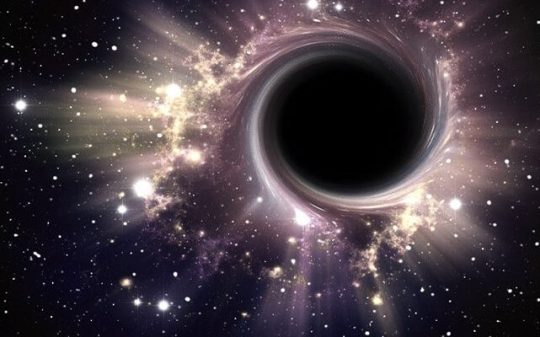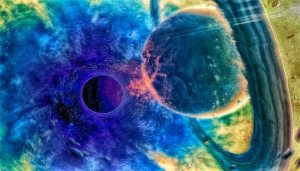Physicists have successfully simulated a black hole inside a laboratory, but on an infinitely smaller scale. A glimpse however, was enough to prove the decades-old theory of Hawking radiation is true despite all claims.
Black holes are the epitome of our little knowledge about the Universe. We are very unlikely to shed light on the science behind the mystery of black holes, since they have a habit of consuming any approaching light in their gravitational pull.
Our scientists haven’t yet reached the stage of identifying whether the black holes are either a three-dimensional colossus or a two-dimensional cosmic phenomenon projected in 3d, similar to the concept of a hologram.
The holograph hypothesis was proposed by physicist Leonard Susskind in 1990s, taking into account that the Universe needs only two dimensions in order for any law of physics (such as gravity) to work properly.
This plausible theory might solve the contradictions between Einstein’s theory of relativity and quantum mechanics (according to the paradox, the nothingness can escape a black hole, unlike matter, but matter’s information can never be utterly destroyed)
In addition, the two-dimensional character of black holes is sustained by the recent matching up of results obtained from the study of gravitational phenomena and the behavior of quantum particles, using only two spatial dimensions.
A more thought-provoking aspect regarding the black hole phenomenon is the event horizon which is the step way just over the edge of a black hole, which is considered to be a special kind of void, with nothing inside, everything passing the edge remaining stuck in the gravitational fluctuations field. Actually, some physicists consider the interior of a black hole as inexistent.
An alleged condition of an existing black hole is that it must have an entropy, or else it would violate the second law of thermodynamics. Still, the entropy of a system is an abstract concept with no standard calculation formula as long as it lacks a clear origin and concrete ways of measuring.
The entropy is a physical property that defines the balance between the order and disorder of any living or inanimate thing. In the past, Stephen Hawking concluded that the entropy of a black hole is proportional to its area, undeterred by its volume. This theory was the onset for the possibility of holographic black holes.
Concerning the issue of determining the entropy value, a new theoretical approach allowed new calculations of the entropy which contributed to a greater relevance regarding the theory of a cosmic optical illusion. The research is led by physicist Daniele Pranzetti of the Max Planck Institute for Theoretical Physics in Germany. A modern tool for theoretical physics known as Loop Quantum Physics helped in explaining the concept of quantum gravity.
Quantum gravity describes a gravitational force in agreement to the principles of quantum mechanics that prognosticated the composition of the fabric of space-time being aggregated by quanta (“atoms of space-time”). Multiple quanta form a condensate, and a black hole made only of such condensates would have a unique set of properties with a collective behavior that can substantially facilitate the determination of the gravitational impact, simply by studying the properties of just one condensate.
Thus, the scientists involved in this project were able to use a more complete and more complex version of the earlier models, which will grant a far more realistic and precise result, overwriting the previous ambiguous calculations.
Their results over the hologram hypothesis can be generalized by comparing the black hole with a 3D basketball hoop, the hoop ring being the event horizon and the hoop net being the hole that disintegrates all matter. Flatten the net by pushing it up into the ring, obtaining a 2D circle. Last, replace the metal and string of the basketball hoop with water, so the entire hoop has a unique structure and composition, making possible to apply one measure to the entire content of the hoop.
This experimental approach meant the first step in designing a model that reveals that the three-dimensional black holes can most likely be an optical illusion, since it has no theoretical need for an actual “hole”, as depicted in the previous abstraction, for the entropic information can be stored within a two-dimensional structure.
Sources:











